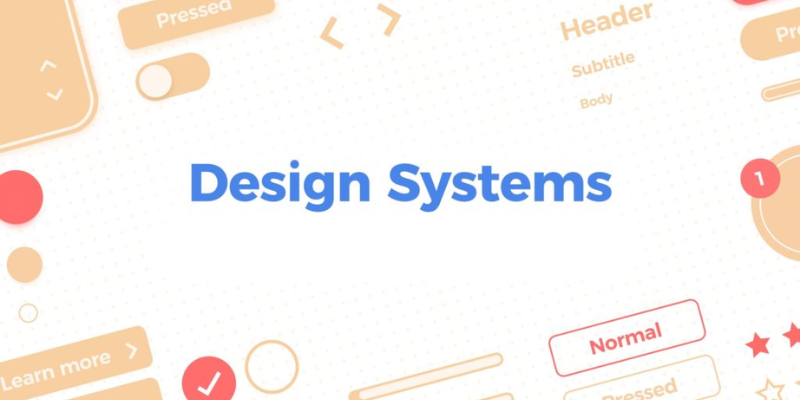In the dynamic world of UI/UX design, maintaining consistency is essential for delivering a seamless and engaging user experience. As user expectations evolve, the need for cohesive and intuitive designs across platforms becomes even more critical. One way to ensure this level of consistency is by implementing a well-structured design system. A design system serves as a comprehensive guide that combines style guidelines, reusable components, design principles, and best practices to ensure uniformity across a company’s digital products. In this blog, we will explore how to create a design system that ensures consistency in UI/UX design, and why it is crucial for enhancing user satisfaction and engagement.
Understanding the Value of a Design System
A well-defined design system offers immense value to teams working across various products and platforms. It establishes a cohesive visual and functional language, ensuring that every design element reflects the brand’s identity and values. Consistency in UI/UX helps users navigate interfaces intuitively, fostering trust and familiarity with the product. This reliability enhances the overall user experience, making it easier for users to interact with digital products efficiently.
Beyond user experience, design systems streamline collaboration among designers, developers, product managers, and other stakeholders. With a shared reference point, teams can ensure that they are aligning with the same design principles, reducing discrepancies and misunderstandings. Enrolling in a UI UX Design Course in Marathahalli can provide valuable hands-on experience and skills for professionals seeking to gain expertise in creating and implementing such systems.
Key Elements of a Design System
A successful design system comprises several crucial elements that ensure consistency and ease of use. Here are the key components that form the foundation of an effective design system:
- Style Guide:
The style guide is a central part of any design system, serving as a comprehensive document that defines typography, color schemes, spacing, and imagery guidelines. It provides the foundation for all design-related decisions, ensuring that every visual element adheres to the brand’s identity. By referencing the style guide, designers can maintain consistency in aesthetics across all user interfaces. - Component Library:
A component library houses reusable UI components, such as buttons, input fields, navigation bars, and cards. By using these standardized components, designers and developers can ensure uniformity across applications. This library not only increases efficiency but also allows for scalability as new components can be added and existing ones improved. Learning how to create and utilize a component library effectively is a core part of UI UX Design Courses in Bangalore, where professionals are trained to master these essential tools. - Design Tokens:
Design tokens are variables that store design attributes, such as color values, font sizes, and spacing units. These tokens ensure that the design remains consistent across different platforms, applications, and design tools. By leveraging design tokens, updates to styles can be made globally without causing inconsistencies in the user interface. - Documentation:
Clear and thorough documentation is a critical element of any design system. This documentation serves as a manual for designers and developers, offering guidance on how to implement design components, follow best practices for accessibility, and ensure consistency across all products. Well-documented design systems provide an easy reference for team members and reduce the risk of miscommunication. - Version Control:
Design systems must evolve as products and technologies change. Version control enables teams to track changes, ensuring that updates to the design system do not negatively impact existing designs. By adopting version control practices, organizations can continuously improve their design system while maintaining stability.
Implementing a Design System for UI/UX
Implementing a design system requires collaboration and structured planning. Below are some steps to ensure a successful implementation:
- Gather Stakeholders:
Assemble a team of designers, developers, and product managers. Collaboration is essential, as input from multiple disciplines will help shape a design system that meets everyone’s needs. For example, developers can offer insights into technical feasibility, while designers can provide creative direction. - Conduct User Research:
A design system must cater to the end user. Conducting user research will allow you to identify key pain points and preferences, ensuring that your design system is user-centric. Aligning the design system with user needs will result in an intuitive and engaging experience. - Prototype and Test:
Before fully implementing the design system, create prototypes of UI components and test them with real users. User feedback will help refine the design system and ensure it addresses practical needs. - Launch and Iterate:
After implementing the design system, continuously gather feedback and make necessary improvements. A design system is not static; it must evolve along with the organization’s products. Regular updates and refinements will keep the design system relevant and effective. - Provide Training:
To maximize the impact of your design system, offer training sessions to your team. The Best Training Institute in Bangalore offers courses that help professionals gain mastery in design systems and UI/UX principles, ensuring your team is equipped with the knowledge needed to implement the system effectively.
Creating a design system for consistency in UI/UX is a strategic move that offers long-term benefits in terms of efficiency, collaboration, and user satisfaction. By establishing a unified visual language, developing reusable components, and maintaining clear documentation, teams can produce cohesive and high-quality products. Whether you are a designer or developer, embracing the principles of design systems will elevate your work, streamline your processes, and ultimately lead to improved user experiences.



